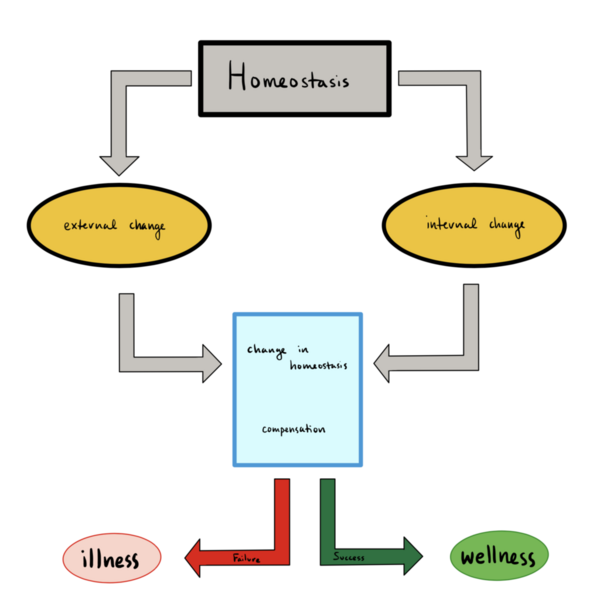Homeostasis: Difference between revisions
No edit summary |
No edit summary |
||
| Line 9: | Line 9: | ||
== | == Measures of homeostasis == | ||
Include: | |||
* Our vital signs (blood pressure, core body temperature, heart rate, respiratory rate, and oxygen saturation) give an indication of a possible homeostatic imbalance. | |||
* A basic metabolic panel can be done to show electrolyte disturbances. | |||
== Sub Heading 3 == | == Sub Heading 3 == | ||
Revision as of 03:25, 1 April 2023
Original Editor - [[User:Lucinda hampton|Lucinda hampton
Top Contributors - Lucinda hampton
Introduction[edit | edit source]
Homeostasis, as defined thus "A self-regulating process by which biological systems maintain stability while adjusting to changing external conditions"[1]. Our bodies various functions must operate in a narrow range of balance internally, a dynamic equilibrium, in spite of a changing external environment. Our individual cells require our body to maintain these conditions to prevent the death of our cells, tissues and organs. [2]The body achieves this dynamic homeostasis by regulating temperature, glucose, toxins, blood pressure and pH.
Measures of homeostasis[edit | edit source]
Include:
- Our vital signs (blood pressure, core body temperature, heart rate, respiratory rate, and oxygen saturation) give an indication of a possible homeostatic imbalance.
- A basic metabolic panel can be done to show electrolyte disturbances.
Sub Heading 3[edit | edit source]
Resources[edit | edit source]
- bulleted list
- x
or
- numbered list
- x
References[edit | edit source]
- ↑ Billman GE. Homeostasis: the underappreciated and far too often ignored central organizing principle of physiology. Frontiers in physiology. 2020:200.Available:https://www.ncbi.nlm.nih.gov/pmc/articles/PMC7076167/ (accessed 1.4.2023)
- ↑ Libretti S, Puckett Y. Physiology, homeostasis.Available: https://www.ncbi.nlm.nih.gov/books/NBK559138/(accessed 1.4.2023)







